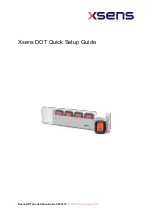
<
Toc
>
<
Ind
>
87
All Rights Reserved. Copyright © 2000, Yokogawa Electric Corporation
TI 04L01A01-02E
【
About Display Functions
】
Question
Answer
What is the refresh rate of the
waveform display?
The refresh rate is determined by the waveform span rate you select as follows. (The
values in parentheses indicate the equivalent chart speed of a conventional chart
recorder.)
Waveform Span Rate : Refresh Rate
a) 4 hours/div (approx.2.5mm/h) : 480 sec
b) 2 hours/div (approx.5.1mm/h) : 240 sec
c) 1 hour/div (approx.10.2mm/h) : 120 sec
d) 30 min/div (approx.20.5mm/h) : 60 sec
e) 20 min/div (approx.30.7mm/h) : 40 sec
f) 10 min/div (approx.61.5mm/h) : 20 sec
g) 5 min/div (approx.123.0mm/h): 10 sec
h) 2 min/div (approx.307.5mm/h): 4 sec
i) 1 min/div (approx.615.0mm/h): 2 sec
What does “div” in “60 min/div”, the
unit of the waveform span rate, stand
for?
“Div” stands for each division (i.e., grid interval) of the time scale on the waveform
display. Hence, if the waveform span rate is 60 min/div, the waveforms advance 1 grid
interval in 60 minutes.
1 div consists of 30 pixels.
What is the refresh rate of the current
value (the cursor point) on the
waveform display?
The same as the measurement period.
What happens to the waveform
display if a drastic change suddenly
occurs in a measured value within the
time interval between refreshments?
DX series traces the maximum and minimum values of the measured values, which are
sampled at the measurement period within the time interval corresponding to each
pixel of the time scale. These values are, used to draw the waveform on the screen and
are stored in the display data file. Hence, no matter how slow the refresh rate is, the
maximum and minimum values between each interval are displayed and stored. For
example, when a measured value fluctuates significantly like it usually does for a flow
rate, its waveform shows the same wide trace as a conventional pen recorder would.
Is there pen offset compensation
function?
There is no phase difference between the cursor points and waveform traces between
channels.
On the past-data reference screen,
data from how long prior can be
displayed?
All data in the display data file can be displayed.
How long is the life of the LCD?
The life of the LCD is determined by the life of the backlight, which is 5 years in
general (but varies according to the use of the LCD saver and the brightness setting).
The replacement of the LCD must be performed by Yokogawa Engineering Service
Corporation or an authorized service representative.
Can the display be switched off in
order to prolong the life of the LCD?
By setting the LCD saver on, the backlight automatically dims if there is no key
operation over a certain length of time. The backlight returns to the original brightness
setting whenever a key is touched or an alarm occurs.
The LCD brightness ca be selected from 8 levels for DX100 and 4 levels for DX200.
It does not look the LCD brightness
changed when LCD saver is used.
When LCD saver is used, the change may not be seen obviously, however, the current
value is saved by 50% compared with normal usage.
What is the refresh rate of the digital
values?
1 second.
Can the tag number of the each
channel be displayed?
Yes, tag numbers of up to 16 characters can be displayed.
Is it possible to display the trend
trace of each channel in discrete
zones on the screen? Is it possible to
compress or expand part of the
display range?
Both are possible.
Is it possible to display a desired text
on the screen?
You can define 8 messages of up to 16 characters to be displayed and also stored in
memory. (Refer to “3.1.1 Message Entry”.)
Is it possible to set the desired colors
for the waveform traces?
For each channel, you can select the desired color from among red, green, blue, blue-
violet, brown, orange, yellow-green, light-blue, violet, gray, lime, cyan, dark-blue,
yellow, light-gray, and purple (16 colors).
Is it possible to re-display display
data file stored in media on DX
screen?
Yes, it can be re-displayed by file operation in SET mode.




































